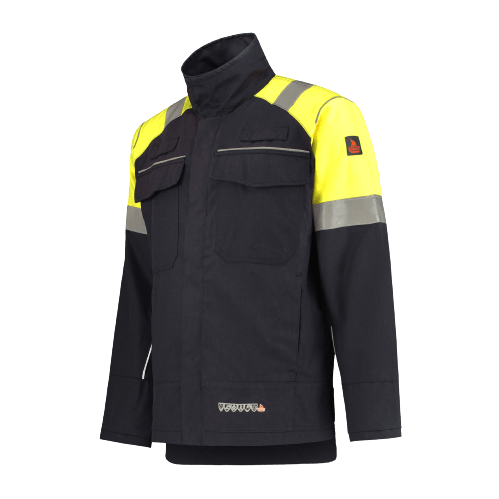- Transparent supply chain
- Sustainable
- Quality
In an age when the words 'sustainability', ‘circularity' and 'corporate social responsibility' are not just buzzwords, but concrete action items for companies, it is more necessary than ever to take the right steps toward sustainable business practices. The year 2023 marks an important moment in this transition; a year when companies' responsibility to act sustainably is no longer an option, but an imperative.
An essential part of this sustainability transition is corporate clothing. Not just any company clothing, but clothing produced with people and the environment in mind. That is exactly where Sustainablecompanywear.nu, an initiative of Vineyards SafeGood, making the difference. This webshop not only stands for clothing that is functional and aesthetic, but also allows companies to choose sustainability.

Duurzaambedrijfskleding.nu is more than a webshop; it is a platform that supports entrepreneurs and organizations in their pursuit of more sustainable business practices. The initiative stems from Wijngaarden VeiligGoed, an organization that has long attached importance to sustainability, circularity and corporate social responsibility. The offering is broad and diverse, with business and Workwear that have a sustainable basis. Unique to this web shop is the transparency about the production process; for each partner it is described how the production process is designed, so that you as a customer can make an informed choice.
In this article, we will discuss the latest technologies and innovations that are transforming the sustainable corporate apparel market. But first, we will delve into why choosing sustainable corporate apparel in 2023 is not only ethical, but also business smart.


Sustainable corporate clothing goes beyond just the functionality and appearance of the clothing; it also takes into consideration the carbon footprint and social impact of production. This type of clothing is manufactured from sustainable materials such as organic cotton or recycled polyester. Moreover, the production processes are designed to have minimal impact on the environment, such as by conserving water and using eco-friendly dyes. There are also often fair working conditions throughout the production chain.
| Feature | Sustainable Corporate Clothing | Regular Corporate Clothing |
|---|---|---|
| Material | Organic cotton, recycled polyester | Traditional cotton, synthetic materials |
| Production Process | Energy and water saving, low CO2 emissions | Often energy intensive, high CO2 emissions |
| Working conditions | Fair wages, safe working conditions | May vary, sometimes poor working conditions |
| Lifetime | Designed for longevity, repair and recycling | Often less durable, faster wear |
| Certification | Often certified (e.g., GOTS, Fair Trade) | Rarely certified for sustainability |
| Cost | Initially possibly higher, but sustainable in the long run | Generally cheaper, but may cost more in the long run due to replacement |
By choosing sustainable corporate apparel, your company is not only making an ethical choice, but also investing in apparel that is both cost-effective and sustainable in the long run.


In light of the increasing emphasis on sustainability, the world of corporate apparel is also undergoing a significant transformation, driven by technological innovations. These innovations are aimed at improving the sustainability of corporate apparel on several fronts.
One of the most notable innovations are smart textiles. These materials are not only durable but also intelligent; for example, they can regulate body temperature, wick away moisture or even collect data for health monitoring. This makes it possible to produce clothing that is not only environmentally friendly but also increases the safety and comfort of the wearer.
The use of recycled materials such as PET bottles or old clothing in the production process has also boomed. These materials reduce the need for new raw materials, and thus the impact on the environment.
The third pillar of innovation can be found in energy-efficient production methods. Techniques such as waterless dyeing or the use of solar energy in factories make it possible to significantly reduce the carbon footprint of the production process.
With these technological innovations, sustainable corporate apparel becomes not only an ethical choice, but one that offers numerous practical benefits. It is an exciting time for companies looking to make the transition to more sustainable operations.
If you are wondering how you can make your business operations more sustainable, Sustainablecompanywear.nu is a good starting point.